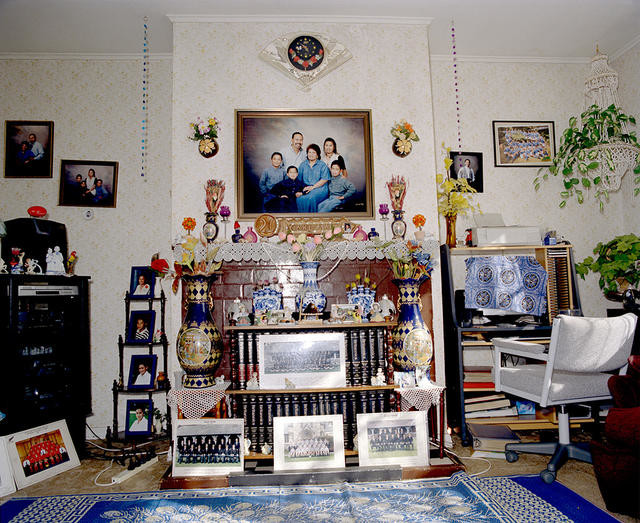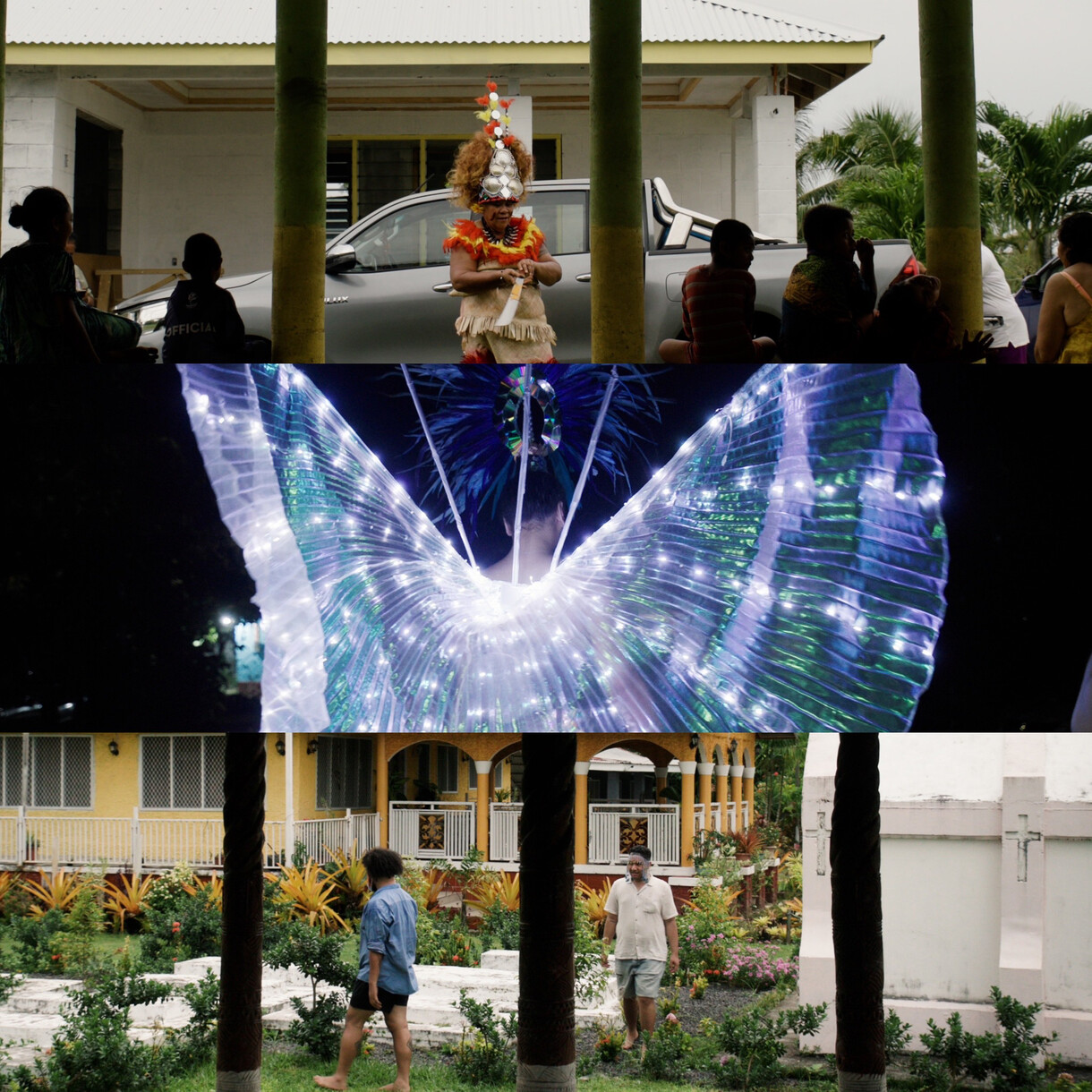Edith Amituanai
Aotearoa New Zealand, b.1980
Samoan,
Pasifika
The Manu Lounge
- 2006
- Archival pigment print
- Purchased 2019
- 1199 x 1467mm
- 2019/003
Tags: artificial flowers, bookcases, books, brick (clay product), carpets, chairs (furniture forms), families, flowers (plants), frames (furnishings), photographs, shelves, teams, vases
Edith Amituanai’s parents left Samoa in the 1980s to join family in Ōtautahi / Christchurch before settling in Tāmakimakaurau / Auckland. Amituanai’s documentary-based photography generates an insider’s view of contemporary Samoan society in Aotearoa New Zealand.The House of Manu and The Manu Lounge reveal the working relationships Amituanai developed with the Manu Samoa rugby team members for a series of work she was making titled Déjeuner. She said: “I can’t photograph the All Blacks the same way, because the All Blacks are, you know, a protected image. And you get about zero point five minutes with them. And I need four years with people.” The absence of the rugby player in the family home increases our understanding of his value within his family unit; his awards and prizes recognise achievements and are a substitute for his presence while away on tour.
(Te Wheke; Pathways Across Oceania, 2021)
Exhibition History
In 2007, Edith Amituanai travelled to Europe to photograph New Zealand-Samoan professional rugby players who were based in France and Italy. She also took photographs in their family homes back in Aotearoa. This series is named Déjeuner, the French term for ‘lunch’, in recognition of the regular family get-togethers that one of the players claimed he was most homesick for. These photographs document what Amituanai describes as third-wave Pacific migration, as the relocation of the players to Europe was driven by the need to further their careers internationally.
The Manu Lounge was shot just prior to this, in 2006, in the home of Amituanai's Aunt Lomona in Spreydon, Christchurch. It shows the lounge laden with images and memorabilia of Carl Manu who was playing rugby in Grand Parma, Italy at the time. Shot from another angle and taken a year later, The House of Manu is part of the following Déjeuner series.
The two photographs show the same room, at first busy with family portraits and decorations, and then in a transitional stage as the family prepare to move house. Many objects have been removed –the display of photographs and mementos in front of the hearth – and one object wrapped in newspaper rests next to a packing tape dispenser. Together, they offer insight into how the idea of 'home' can evolve and shift between generations and circumstances, and how the domestic environments we piece together around us reflect our connections with the past, as well as our dreams for the future.
(Melanie Oliver, 2020)


